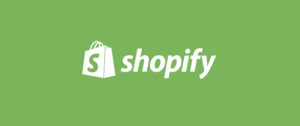Guest Author: Rich Wiseman
Low Cost Tactics to Reach Your Target Market
Anticipation is the key to a successful grand opening. Building that feeling among your target market is another story. Unfortunately I can’t tell you why people should come to your business, but I can help you with the nuts and bolts of marketing your grand opening.
All of the tactics outlined here are low cost, as most new stores don’t have much of a budget to play with. These strategies will require time, consistency and a little creativity to be successful. With that said, here are four strategies for marketing your grand opening.
Run a Traditional Sign Campaign
Developing a sign campaign is key for any local business. The people that regularly pass by your business are most likely to come in, so having a “Coming Soon” sign out front with your business’ name will spark interest among those people. Once you have a set date for the opening, you can change the sign to include the date so people know when they can come see your business.
Any sign you have should incorporate your online assets. Use a QR code or a shortened URL to let people easily visit your website, Facebook or Twitter. You can also start building your email list this way. Offer a discount to people who sign up for your newsletter, and include the URL for the sign-up page. Send them the discount coupon in their email so they have to use a valid email, and email them again a week before, the day before, and the day of your opening to remind them.
Build Your Audience with Social Media
Social media is tricky for businesses that aren’t open yet. Liking something on Facebook is equivalent to an endorsement, so if someone hasn’t yet experienced your business, they might be reluctant to endorse you. That doesn’t mean you should ignore it though.
Social media is an inexpensive way to establish your presence online. Being present on both Facebook and Yelp are a must for local businesses.
Once people reach your page, you need to encourage them to like or share your page. Running contests and promotions is one way, but something a bit more targeted is ideal. One way of getting people to like your pages is to find early adopters; people who are particularly passionate about the product or service you offer and want to try it right away. The internet offers great solutions to this.
Target Early Adopters Using Internet Ads
The internet offers incredible laser-targeting potential for your business. Facebook ads can be narrowed down to specific demographics. Yelp ads are effective in reaching your local audience and people specifically searching for businesses like yours. You can drive people to your social pages from there, and encourage them to like your page with the social media tactics we discussed earlier.
Tightening you demographic parameters in your advertising is crucial because you want to reach those people who are legitimately interested in your business to get the most out of your money. Think of your ideal customer, the one you wish all of your customers were like, and model your targeted ads towards those people.
Don’t Forget Simple Word-of-Mouth
There’s a good chance you know friends, family, and local community leaders where you’re opening your business. Invite all of these people and encourage them to bring friends. Invite any contacts you have in the press. These are the people that want you to succeed and will talk about your business. Word-of-mouth is still one of the most powerful marketing tools around.
Finally, it’s important not to get too caught up in all of this and be unprepared for Day 1 of your opening. If you market your business right, you’ll have customers, so make them want to come back!
——————
For more resources, see our Library topics Marketing and Social Networking.
——————
 Sections of this topic
Sections of this topic















